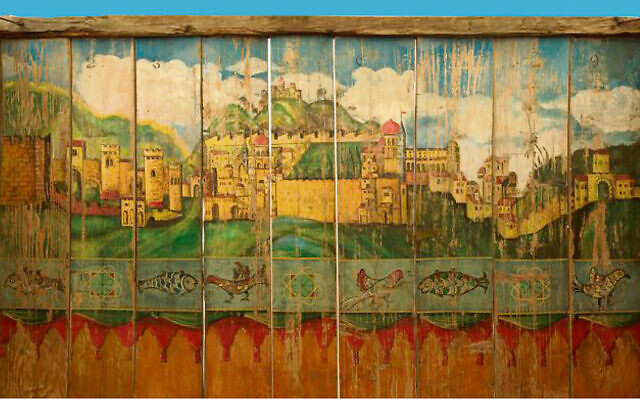The eternal messages of Succot
“The festival of Succot you shall make for yourself for seven days … and you shall rejoice on your festival…” (Devarim 15:13-14)
Why do we observe Succot after Yom Kippur? Say the sages; On Rosh Hashanah God sits in judgement over Israel. On Yom Kippur he seals his judgement. Perhaps it was decreed that Israel be exiled? Therefore they erect a succah and go into exile from their houses (so that symbolic fulfilment of the decree obviated the need for real exile).
Indeed Succot symbolises galut (exile) – the wandering in the desert at the mercy of the elements from which we were only saved by Divine Providence including the Clouds of Glory (which some of the sages saw as the reason for the schach, although another view is that a succah covered by schach is representative of the actual huts Israel dwelt in in the desert).
Yet, for generations of Diaspora Jewry, Succot also represented the ultimate connection with Eretz Yisrael – particularly at the time when the likelihood of actually visiting or living there was no more than the wildest dream. Nowadays, too, many of us deliberately prefer an etrog from Israel to connect ourselves on Succot with the land and its agriculture.
The rabbis compared the mitzvah of succah to that of living in Israel. Living in Israel, we actually reside within a mitzvah – totally surrounded by holiness. Likewise, during Succot, when we live in a succah. And just as Israel is the place where “einei Hashem Elokecha bah – the eyes of the Lord your God are upon it” (Devarim 11:12) so too on Succot we leave the safety and security of our solid dwellings to spend eight days in a flimsy hut where we are directly influenced by the elements controlled only by God himself.
Many a Diaspora Jew who moved into his succah for eight days in a far-flung shtetl, and who would never physically visit our land, truly felt that he had left his real house to the “geulah sheleimah”. And even today, many of us celebrating Succot in the lands of the Diaspora will decorate our succot with pictures of the holy places
Of course, another connotation of succah, perhaps one uppermost in many of our minds, is that of Succat Shalom – the Tabernacle of Peace.
Many of us may recall the photogenic, but unfortunate, images from the Yom Kippur War combining the symbols of the festival – succot and lulav – with images of war such as soldiers and tanks. But the message of Succot is certainly not one of war.
On Shabbat and festivals we conclude the first portion of the Ma’ariv (evening) service with “Baruch atah Hashem, hapores sukkat shalom alenu ve’al kol umo Yisrael ve’al Yerushalayim –Blessed are You Hashem, who spreads the Tabernacle of Peace over his people Israel and Yerushalayim.”
Reflecting on the Day of Judgement the one of the 12 psalms associated with Asaph (Psalm 76:2-3) also highlights the interrelationship between restoration of Divine glory and its residence in Zion: “Noda biyehuda Elokim, b’Yisrael gadol shemo. Vayehi b’shalem succo, u’meonato b’Zion – God is known in Judah; His name is great in Israel. And in Shalem also is His tabernacle, and His dwelling place is in Zion.” Shalem, mentioned as the kingdom of Malkitzedek (Bereshit 14:18) is considered by the sages to be Jerusalem.
There is an apparent – yet so elusive – intrinsic interrelationship between peace, the people of Israel and the city of Jerusalem.
The kabbalists saw each human action as having cosmic significance. When an individual carries out a mitzvah in some far-flung corner of the earth, its implications are far reaching. During Succot we insert into the Grace After Meals: “Harachaman hu yakim lanu et succat David hanofalet – for us the tabernacle of (King) David which is now fallen.” As we build, and dwell in our succah, traditionally visited by the ushpiziin – the seven “shepherds” Abraham, Isaac, Jacob, Moses, Aharon, Joseph and David – we too are contributing to the rebuilding of the great tabernacle of the future.
And yet as indicated by the haftarah prescribed for the first day of the festival (Zechariah 14), the Messianic era “when God will be One and His name will be One” will not only impact upon the Jewish nation. Looking to the Messianic era, the prophet Zechariah anticipated a time when not only world Jewry, but even our neighbouring gentile nations led by Egypt would come up to that temple to celebrate Chag HaSuccot and its message of peace and unity.
Would that in our day we would see the realisation of his vision together with fulfilment of the associated promise: “veyashvah Yerushalayim lavetach – Yerushalayim will dwell in security”. (Zechariah 14:11)
May there be Shalom al Yisrael as the succah of peace is spread over us all, speedily in our time.
Shabbat Shalom
Chag Sameach,
Yossi
Yossi Aron OAM is The AJN’s religious affairs editor


comments